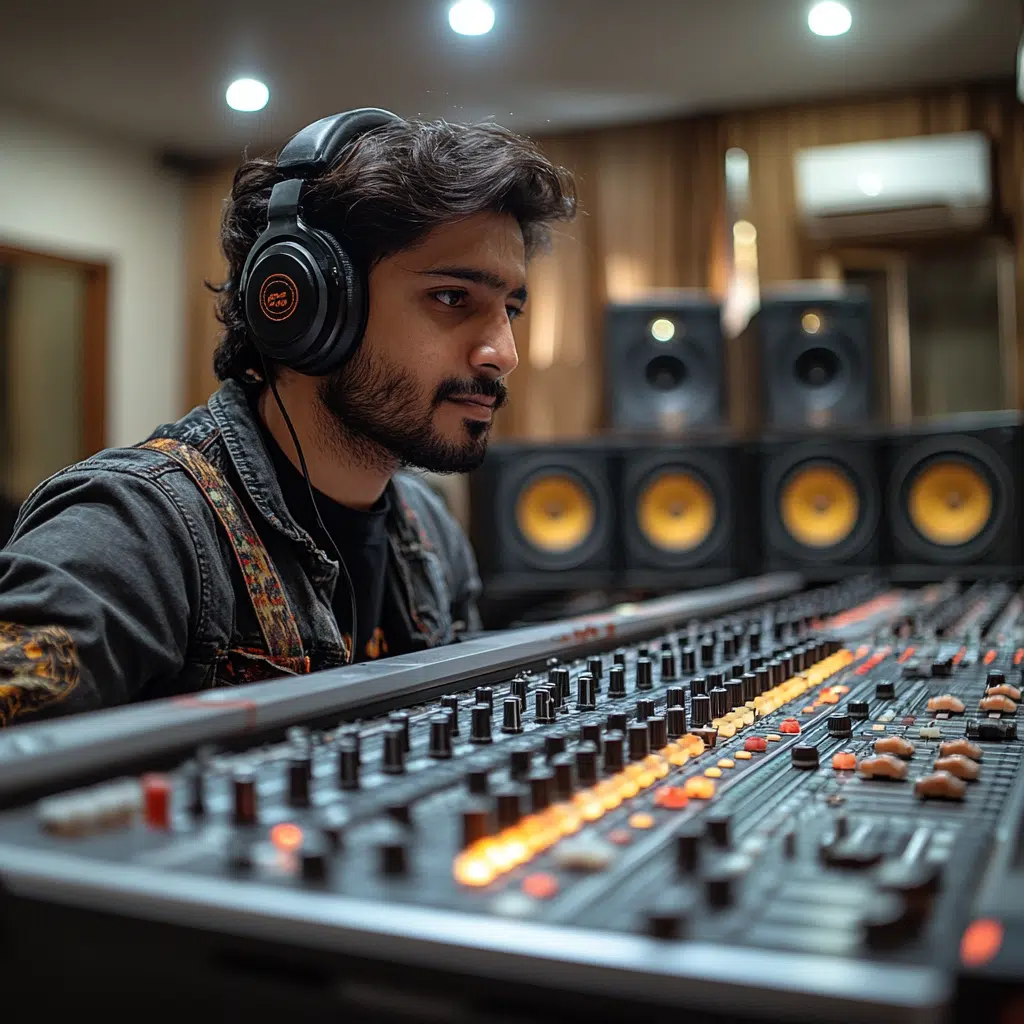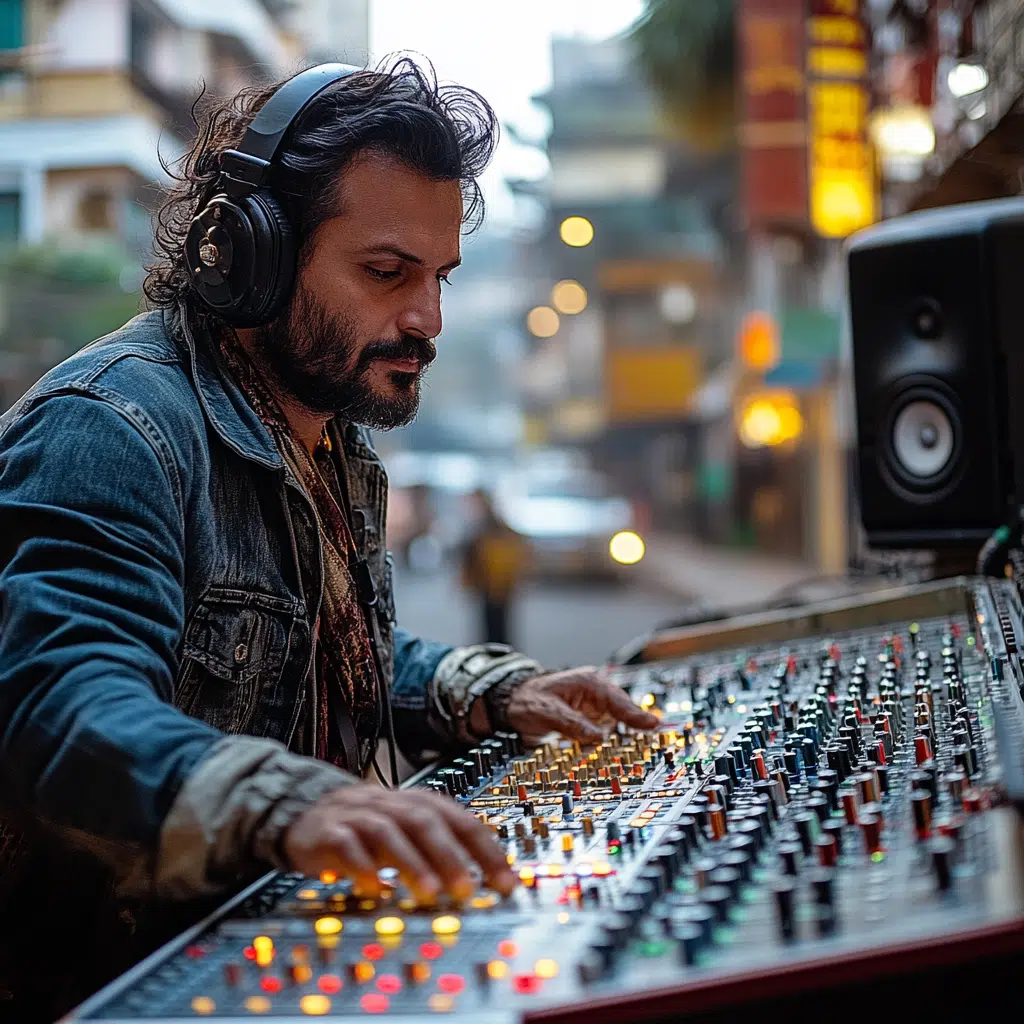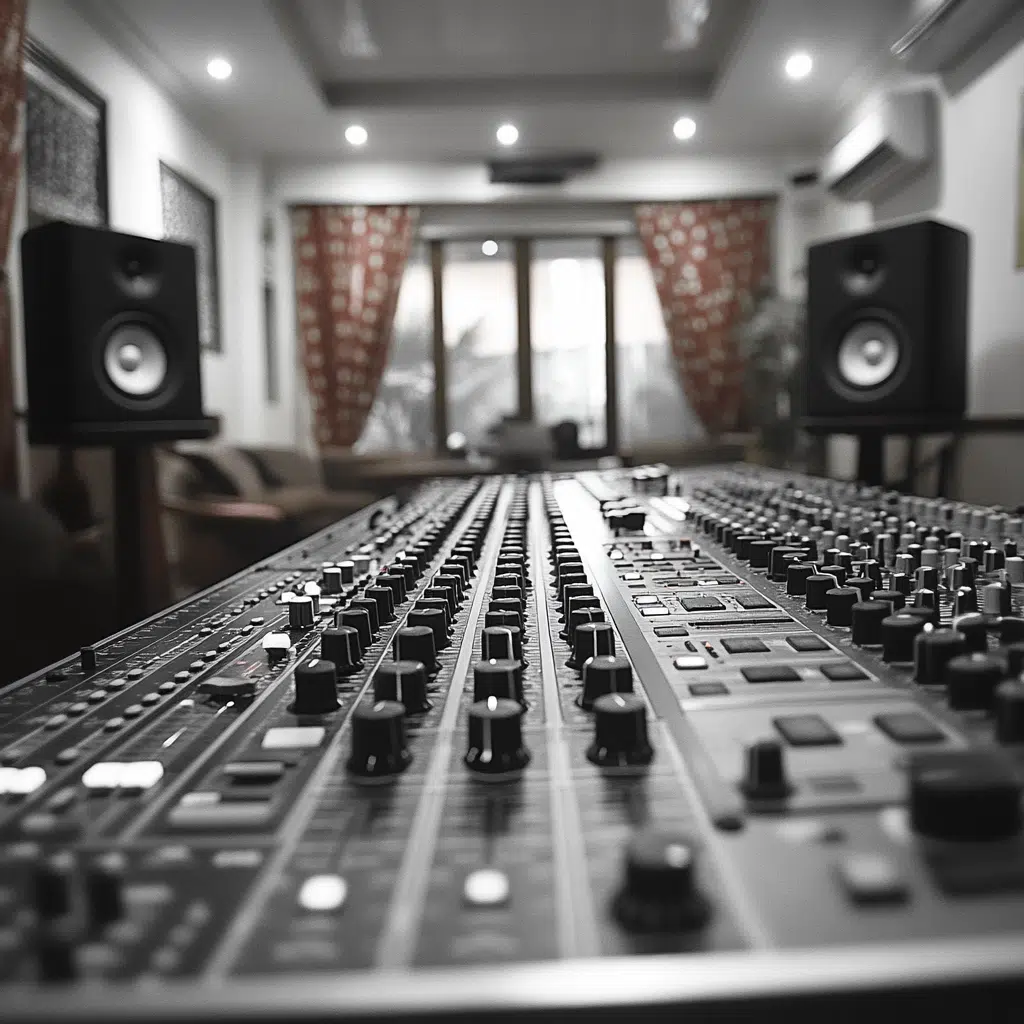In today’s fast-paced universe of audio post-production, Mumbai has firmly positioned itself as a pivotal hub for remote sound mixing. Remote Sound Mixing Mumbai is quickly becoming a favored phrase among industry professionals, as the city’s blend of modern technology and rich cultural elements creates a broader sonic palette for global media. No longer tethered by geographic constraints, artists and engineers in Mumbai are embracing the opportunity to showcase their skills on a worldwide stage, making waves from Hollywood to Bollywood and beyond.
Bridging Time Zones: Global Collaboration with Remote Teams
Remote Sound Mixing Mumbai has essentially reshaped how the audio industry collaborates across borders. Many studios like Prime Focus and YRF Studios have taken advantage of this trend, operating around-the-clock services that cater to productions everywhere. This, in turn, enables a unique fusion of cultural soundscapes, interweaving local artistry with global storytelling. By doing so, Mumbai-based studios amplify productivity and creativity, capturing a worldwide audience’s imagination without ever meeting them face-to-face. This global interconnectedness is reminiscent of how a Brandbuilder shapes a product’s identity, except here, we’re crafting sonic identities.
To arrive at such achievements, communication is key. Studios in Mumbai address time zone challenges by utilizing project management tools that streamline feedback and iteration. Just like when you have a conversation about What ‘s bridge financing options, clarity in communication promotes smoother operations, ensuring that clients across the globe receive mixes tailored to their vision.
Technological Advancements: Software and Tools Leading the Charge
The technological prowess driving Remote Sound Mixing Mumbai is nothing short of cutting edge. Studios in the city harness premier audio tools such as Avid Pro Tools and Steinberg Nuendo, set within state-of-the-art soundproof environments. These resources empower engineers to craft mixes that don’t just meet but exceed global benchmarks. Additionally, the extensive adaptation of Dolby Atmos sound mixing los angeles is a testament to the city’s commitment to creating truly immersive aural experiences.
The integration of such technology paves the way for more than just traditional mixing. Think of it as the equivalent of a culinary journey at a popular Suya spot, where complex flavors and techniques culminate in an unforgettable experience. This ethos is mirrored in the quality and creativity of the audio landscapes hailing from Mumbai.
| Aspect | Details |
| Location | Mumbai, India |
| Service Offered | Remote Sound Mixing |
| Average Rates | – Mixing: $200 to $800 per track – Mastering: $50 to $150 per track – Full Production: Varies based on project scope |
| Core Process | Combining multiple audio sources into one or more channels; manipulation of volume, frequency content, dynamics, and panoramic position. |
| Key Benefits | – Access to professional-grade mixing from anywhere – Cost-effective compared to in-studio sessions – Opportunity to work with diverse talents and styles remotely |
| Getting Started | Initiate contact with bands and artists by sending personalized emails about their work and expressing why you admire their music. |
| Tools & Software | Pro Tools, Logic Pro, Ableton Live, FL Studio, Cubase, etc. |
| Ideal Clients | Independent artists, bands, film and TV producers, multimedia creators |
| Notable Sound Engineers | Recommendations generally include reaching out to mixing or mastering engineers with a proven track record in similar projects or genres relevant to your work. |
| Potential Challenges | – Time zone differences for international clients – Maintaining effective communication remotely – Ensuring internet stability for seamless file transfer and collaboration |
| Future Prospects | Growing demand for remote services as more artists embrace digital collaboration and global access to a wider pool of talented sound engineers. |
Case Study: Reliance MediaWorks and The Global Stage
Reliance MediaWorks stands as a prime example of excellence in Mumbai’s remote sound mixing sector. Noteworthy is their contribution to blockbuster franchises like “Fast and Furious 9,” which underscores Mumbai’s ability to satisfy far-reaching auditory needs. This success story highlights how a Mumbai studio’s strategic use of Remote Sound Mixing Mumbai methodologies has expanded its global clientele reach.
Their journey underscores the potential of projects initiated nine Months ago From today and realized through remote mixing. It exemplifies how the Mumbai sound scene has blossomed into a sophisticated ecosystem capable of competing with the best globally.
Overcoming Challenges: Quality Control and Communication
Keeping quality intact during the remote sound mixing process is no small feat. Mumbai studios face this hurdle head-on through advanced project management platforms and dedicated client liaison officers, ensuring everyone stays on the same page. Like addressing rumors about whether the Nfl Is rigged, transparent communication confirms everyone’s working towards the same goal.
This strategy ensures consistency and builds trust, invaluable assets when you’re developing an audio narrative. The rapid feedback loops foster a collaborative atmosphere that lets creatives focus more on their craft rather than the logistics.
The Impact of Culture: Influences on Sound Design
Mumbai’s cultural vibrancy leaves an indelible mark on the art of sound design. Influences from traditional festivals like Diwali and Holi seep into ambient soundscapes, blending nostalgia and innovation in unique ways. Additionally, the sugar rush of Bollywood’s pulsating rhythms and dynamic narratives finds echoes in the styles emerging from Remote Sound Mixing Mumbai studios.
This rich tapestry offers an additional layer of depth to projects looking to stand out in the crowded audio market, providing creators opportunities to infuse world sounds into their storytelling. It’s like cooking with a blend of diverse spices, each contributing to the experience’s richness.
Training and Innovation: Nurturing the Next Generation
Educational hubs like the Film and Television Institute of India (FTII) and Whistling Woods International in Mumbai are crucial in shaping future sound engineers and designers. Their programs emphasize cutting-edge techniques in remote sound mixing, providing students invaluable hands-on experiences and exposure to industry veterans. This grooming process ensures a continuous stream of talent ready and able to meet the demands of Remote Sound Mixing Mumbai.
Situated at a vibrant confluence of learning and creativity, these institutions cultivate not just skills but a community passionate about pushing the boundaries of what’s possible in audio.
The Future of Remote Sound Mixing in Mumbai
Looking forward, Remote Sound Mixing Mumbai is set to reach new heights with innovations in artificial intelligence and cloud-based solutions. Technology like 5G and advancements in VR/AR promise faster, more collaborative workflows, reshaping the definition of audio storytelling. As the industry pivots, Mumbai remains on the precipice, offering a fresh blend of tradition and modernity that continues to captivate creators worldwide.
The city’s embrace of both technological advancement and its rich cultural heritage offers a unique platform for filmmakers and producers. Whether through Online Mixing For Dolby atmos or Remote Mixing For Films, Mumbai is ready to transform projects from ordinary to extraordinary. The lesson here—great audio is more than just the sum of its parts; it’s an experience that elevates the storytelling journey.
In delivering truly memorable soundscapes, Mumbai is undoubtedly shaping the future of remote sound mixing, thanks to its rich cultural influence and ever-advancing technology.
Remote Sound Mixing Mumbai: Expert Audio Magic
When you think of sound mixing, Mumbai’s magic( might not be the first thing that pops into your head. But hey, it’s time to clue you in on a few fascinating facts that really set it apart. Did you know that Mumbai’s sound engineers, despite its bustling cityscape, have been pivotal in producing globally acclaimed soundtracks? Yup, that’s not just a tale from the grapevine! Thanks to remarkable advances in technology, like the state-of-the-art tools found in Dolby Atmos studios,( mixers in this city can tweak audio with uncanny precision, all from a distance.
Behind the Sound Curtain
Let’s peel back the layers on what makes this all possible. With remote collaboration tools,( you can almost feel the pulse of creativity that’s born from Mumbai’s dynamic audio scene. Gone are the days when sound designers had to be glued to one spot! Now, collaboration transcends geographical barriers, allowing creators from Mumbai to shape soundscapes for international film and TV projects. What’s more, these sound experts often juggle numerous projects concurrently. This juggling act doesn’t just stop at mixing, though; they’re also putting their spin on original compositions,( breathing life into stories that reach a global audience.
The Global Sound Stage
Interestingly, the art of sound mixing has turned Mumbai into a hub where diverse auditory traditions meet cutting-edge technology. Sound editors from this city often find themselves working with eclectic rhythms,( blending traditional sounds with contemporary beats to craft audio experiences that linger in the ears. In doing so, they’ve transformed Mumbai into a city that’s truly plugged into the global sound stage. Whether it’s an evocative background score or a crisp TV dialogue mix, the magic of remote sound mixing in Mumbai continues to resonate far and wide, marrying the city’s rich cultural vibes with the future of audio creation.
How much do sound mixers charge?
Sound mixers typically charge anywhere from $200 to $800 per track, depending on the complexity of the project and their level of expertise. Rates can vary greatly based on the individual’s experience and the specifics of what’s required.
How much does studio mixing cost?
Studio mixing falls within a similar price range as sound mixing, usually between $200 and $800 per track. Factors like the studio’s equipment quality, the mixer’s experience, and the project’s requirements can influence the cost.
What is sound mixing studio?
A sound mixing studio is a specialized environment designed for mixing audio tracks. It’s equipped with professional audio gear, acoustically treated spaces, and technology that allows sound mixers to manipulate and enhance audio elements to create a polished final product.
How do I get audio mixing clients?
Getting audio mixing clients often starts with networking and showcasing your work. Reach out to bands or artists by email, expressing what you like about their music and mentioning your past work. Building relationships and a solid portfolio can go a long way.
How much does a sound guy charge?
A sound guy’s charge varies widely depending on the event or project, their experience level, and location. For live events, they might charge a flat fee or an hourly rate, while studio work often falls within the standard range for mixing services.
How do music mixers get paid?
Music mixers usually get paid per project, setting a fee for each track they mix. Sometimes they might negotiate royalties or hourly rates, but a per-track flat rate is common and helps both sides manage expectations.
How much does it cost to record a song in studio in India?
In India, the cost to record a song in a studio can vary a lot, but you might expect to pay anywhere from ₹5,000 to ₹15,000 per session. Prices can fluctuate based on the studio’s reputation, the producer’s fees, and the length of the recording session.
Is mixing or mastering more expensive?
In general, mixing is more expensive than mastering. Mixing involves a lot more time and adjustments to balance multiple audio tracks, while mastering is the final touch to polish the mixed track, usually falling within $50 to $150 per track.
How much do producers charge for mixing?
Producers typically charge between $200 and $800 per track for mixing services. The exact charge depends on the producer’s skill level, experience, and the complexity of the mix.
What is the best software for sound mixing?
The best software for sound mixing depends on personal preference and needs. Popular options include Pro Tools, Ableton Live, Logic Pro, and FL Studio, each offering unique features tailored to different aspects of audio mixing.
What is the difference between sound editing and sound mixing?
Sound editing involves cutting, tweaking, and assembling audio pieces, focusing on the technical cleanup of soundtracks. Sound mixing takes it a step further by balancing these elements and making creative decisions about the overall sound of a piece.
What is the difference between mixing and mastering?
Mixing combines multiple audio tracks into a cohesive whole by adjusting levels, panning, and effects. Mastering is the final polish, ensuring the mixed track is balanced across all playback systems, enhancing the overall loudness and clarity.
How much do audio mixers make?
Audio mixers’ salaries vary widely. Freelancers might earn per project while staff mixers can make an annual salary. In the U.S., wages can range from $35,000 to over $100,000 a year, depending on experience and industry demand.
How do I start audio mixing?
Starting in audio mixing requires learning the software tools, understanding audio principles, and practicing by mixing tracks. Building a portfolio and collaborating with local artists or online can also help gain practical experience.
How do you become a professional sound mixer?
To become a professional sound mixer, you need a background in music or audio engineering and hands-on experience. Interning at studios, networking, and gaining a deep understanding of audio equipment and software are critical steps.
How much should I charge for sound effects?
Charging for sound effects depends on the project’s scope and your expertise. Rates can range from $50 to $200 per effect. Consider the time spent and the complexity of the sound when setting your prices.
How much do producers charge for mixing?
Movie sound mixers can earn a wide salary range, typically from $40,000 to over $100,000 annually, based on their experience and the project’s scale. Collaborating on bigger films usually offers higher pay.
How much do movie sound mixers make?
Live sound mixers make anywhere from $20,000 to $80,000 a year, depending on their expertise, the events they work on, and their geographical location. Larger venues or high-profile events often pay more.



